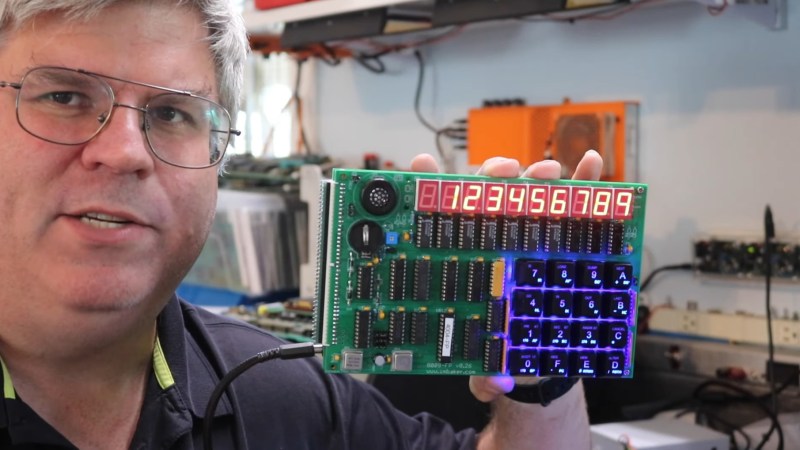[Scott Baker] is at it again and this time he has built a 4-bit single board computer based on the Intel 4004 microprocessor.
In the board design [Scott] covers the CPU (both the Intel 4004 and 4040 are supported), and its support chips: the 4201A clock-generator, its crystal, and the 4289 Standard Memory Interface. The 4289 irons out the 4-bit interface for use with 8-bit ROMs. Included is a ATF22V10 PLD for miscellaneous logic, a 74HCT138 for chip-select, and a bunch of inverters for TTL compatibility (the 4004 itself uses 15 V logic with +5 V Vss and -10 V Vdd).
[Scott] goes on to discuss the power supply, ROM and page mapper, the serial interface, the RC2014 bus interface, RAM, and the multimodule interface. Then comes the implementation, a very tidy custom PCB populated with a bunch of integrated circuits, some passive components, a handful of LEDs, and a few I/O ports. [Scott] credits Jim Loo’s Intel 4004 SBC project as the genesis of his own build.
If you’re interested in seeing this board put to work check out the video embedded below. If you’d like to know more about the 4004 be sure to check out Supersize Your Intel 4004 By Over 10 Times, The 4004 Upgrade You’ve Been Waiting For, and Calculating Pi On The 4004 CPU, Intel’s First Microprocessor.
















Excellent work, Scott!
–Tim (founder of 4004 anniversary project: 4004.com)
Thanks Tim, and great site at 4004.com ! :D
I have 32 bit not 4
my computer is better, and more power eficient
Love to see the old school hardware being kept alive. I’d all but forgotten about some of the parts that were needed to get the CPU to run. Were PLDs a thing when those CPUs were actually used?
Back in the day I was working on a business computer system where the computers sold to customers were 4004-based and the development system 8008-based.
I can’t say the computers were fast but the integrated printer and document handling mechanics were. And the mechanical components were beautifully made with split platens for having two sets of continuous forms, often wide Leporello paper (probably better known as fanfold paper — actually more likely completely unknown — these days) at one side and narrower audit roll on the other. The platen could be split at 1 cm (just under ½ inch) intervals to support different paper widths. It could also handle individual ledger sheets, loading a sheet to the first free line with a system that made cuts in the edge of the sheet for every line printed, and using a mechanical contraption to sense the first missing cut and stop the feeding at just the right time.
I sometimes miss those mechanical contraptions with all their beauty on display as opposed to modern equipment where the ingenuity is hidden behind sterile enclosures. (I know, a generalisation.)
Cool and all, but can it run Linux? Doom? ;)
I’m guessing it might be possibly emulated in a game, like the terminals in Fallout.
They’re on ali express, china beat you to it lmao